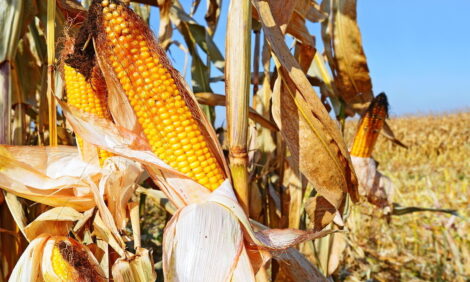



Adding And Capturing Calf Value
Cattlemen may hear about the shrinking beef industry and wonder about their role in the future. They can take heart in the expanding high-quality end of the business, however. Licensed partners of the Certified Angus Beef brand worldwide sell more than 2 million pounds of branded product per day, and supply has increased 92 per cent in the past five years. That’s according to Mark McCully, CAB assistant vice president, supply.
Addressing producer-members of the Pittsylvania County Cattlemen’s in Chatham, Virginia, earlier this month, Mr McCully said demand for CAB products grew along with supply, and that represents opportunity for producers.
Overall higher cattle prices and premiums for the best cattle are two results of strong demand, but producers can take steps to move a greater share of their calves into that premium category, he said. Genetic selection tools available on registered Angus cattle, specifically EPDs (expected progeny differences) can help any herd make progress.
“EPDs are used to compare animals within a breed but you should also pay attention to the average values of the breed,” Mr McCully said. “For example, using a bull in the top half of the breed for Marbling EPD, or those above +0.40, is more in line with a genetic focus on the CAB brand.”
Given the genetic potential, cattlemen can see it realized through comprehensive herd health and nutrition programmes and low-stress management, he added. “Then, find ways to get carcass data by working with organised state programmes, your bull supplier or a CAB licensed feeding partner. Keep detailed records and use that data in sire selection and cowherd culling.”
To illustrate value differences, Mr McCully shared three scenarios with 750-pound (lb.) feedlot calves. Groups one and two were both age-and-source verified, gained 3.5 lb. per day (ADG) with feed-to- gain (F:G) conversion of 6.1. After a theoretical one per cent death loss, both groups finished at 1,325 lb.
The key difference was in carcase grading: Group 1 had five per cent Prime, 40 per cent CAB and 90 per cent Choice or better along with 30 per cent Yield Grade (YG) 1 or 2 and 15 per cent YG 4. Group 2 was leaner with 40 per cent YG 1 or 2 and just five per cent YG 4, but no Prime, only 10 per cent CAB and 50 per cent Choice with five per cent Standard. Then there was Group 3, the calves without age-and-source verification, ADG at 2.9 lb., F:G at 7.0, apparently in poorer health with 4 per cent death loss and finishing at 1,250 lb. They managed the same carcass results as Group 2, but came in $195 per head lower value than Group 1 under current market conditions.
Mr McCully concluded by emphasising the importance of marketing options to capture the value in “value-added” calves.
- Retain full or partial ownership of calves through the feedlot
- Direct marketing to feedlots with bonus options for carcass premiums
- Commingled sales of high-quality calves with other like-minded producers
- Calves backed by a resume that documents their profit potential
- Age-and-source verification with AngusSource®, which generally returns at least $25 per head.



